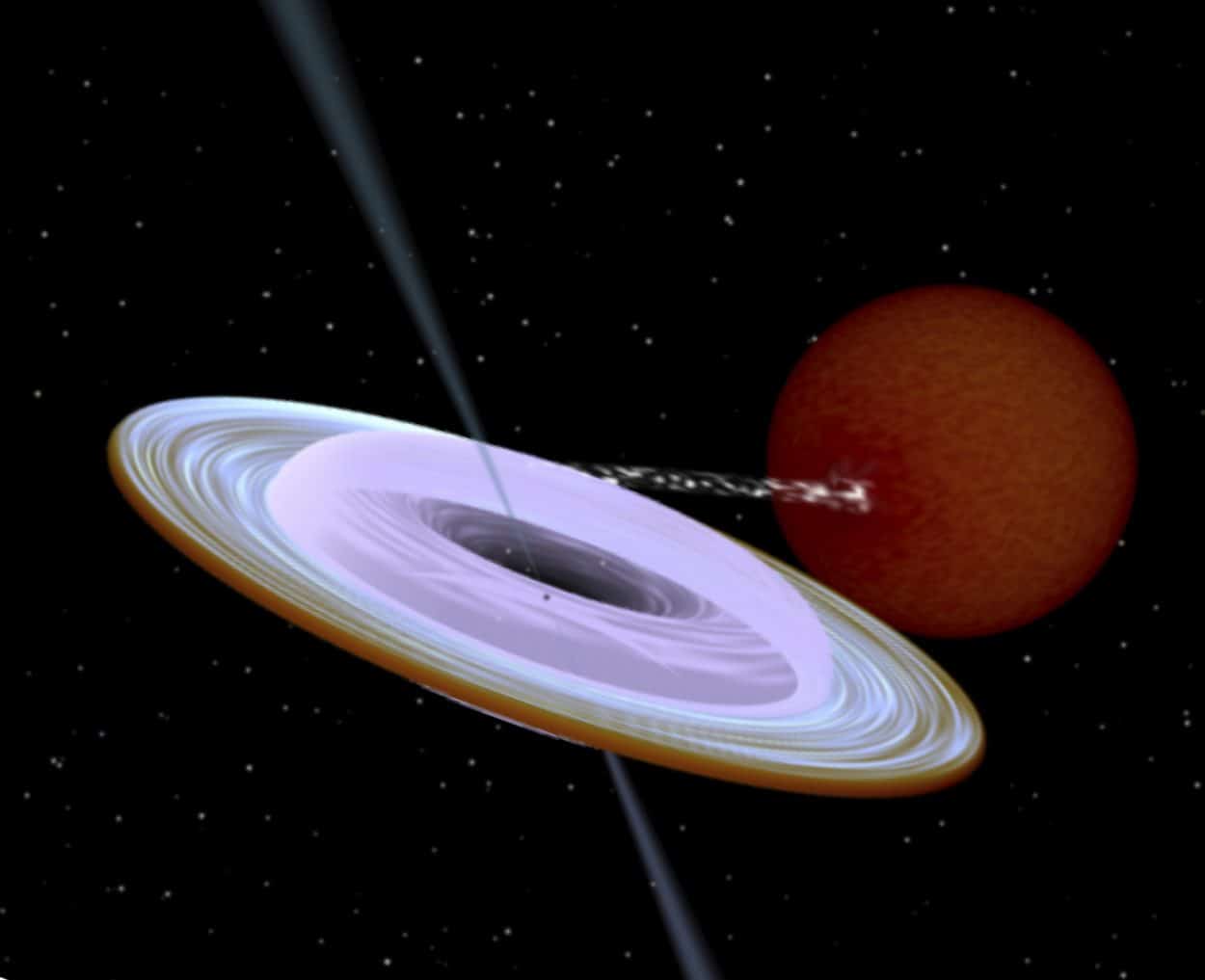Researchers from the University of Turku, Finland, found that the axis of rotation of a black hole in a binary system is tilted more than 40 degrees relative to the axis of stellar orbit. The finding challenges current theoretical models of black hole formation.
The observation by the researchers from Tuorla Observatory in Finland is the first reliable measurement that shows a large difference between the axis of rotation of a black hole and the axis of a binary system orbit. The difference between the axes measured by the researchers in a binary star system called MAXI J1820+070 was more than 40 degrees.
Often for the space systems with smaller objects orbiting around the central massive body, the own rotation axis of this body is to a high degree aligned with the rotation axis of its satellites. This is true also for our solar system: the planets orbit around the Sun in a plane, which roughly coincides with the equatorial plane of the Sun. The inclination of the Sun rotation axis with respect to orbital axis of the Earth is only seven degrees.
“The expectation of alignment, to a large degree, does not hold for the bizarre objects such as black hole X-ray binaries. The black holes in these systems were formed as a result of a cosmic cataclysm – the collapse of a massive star. Now we see the black hole dragging matter from the nearby, lighter companion star orbiting around it. We see bright optical and X-ray radiation as the last sigh of the infalling material, and also radio emission from the relativistic jets expelled from the system,” says Juri Poutanen, Professor of Astronomy at the University of Turku and the lead author of the publication.
By following these jets, the researchers were able to determine the direction of the axis of rotation of the black hole very accurately. As the amount of gas falling from the companion star to the black hole later began to decrease, the system dimmed, and much of the light in the system came from the companion star. In this way, the researchers were able to measure the orbit inclination using spectroscopic techniques, and it happened to nearly coincide with the inclination of the ejections.
“To determine the 3D orientation of the orbit, one additionally needs to know the position angle of the system on the sky, meaning how the system is turned with respect to the direction to the North on the sky. This was measured using polarimetric techniques,” says Juri Poutanen.
The results published in the Science magazine open interesting prospects towards studies of black hole formation and evolution of such systems, as such extreme misalignment is hard to get in many black hole formation and binary evolution scenarios.
“The difference of more than 40 degrees between the orbital axis and the black hole spin was completely unexpected. Scientists have often assumed this difference to be very small when they have modeled the behavior of matter in a curved time space around a black hole. The current models are already really complex, and now the new findings force us to add a new dimension to them,” Poutanen states.
The key finding was made using the in-house built polarimetric instrument DIPol-UF mounted at the Nordic Optical Telescope, which is owned by the University of Turku jointly with the Aarhus University in Denmark.
Header Image – Artist impression of the X-ray binary system MAXI J1820+070 containing a black hole (small black dot at the centre of the gaseous disk) and a companion star. A narrow jet is directed along the black hole spin axis, which is strongly misaligned from the rotation axis of the orbit. Image Credit : R. Hynes





